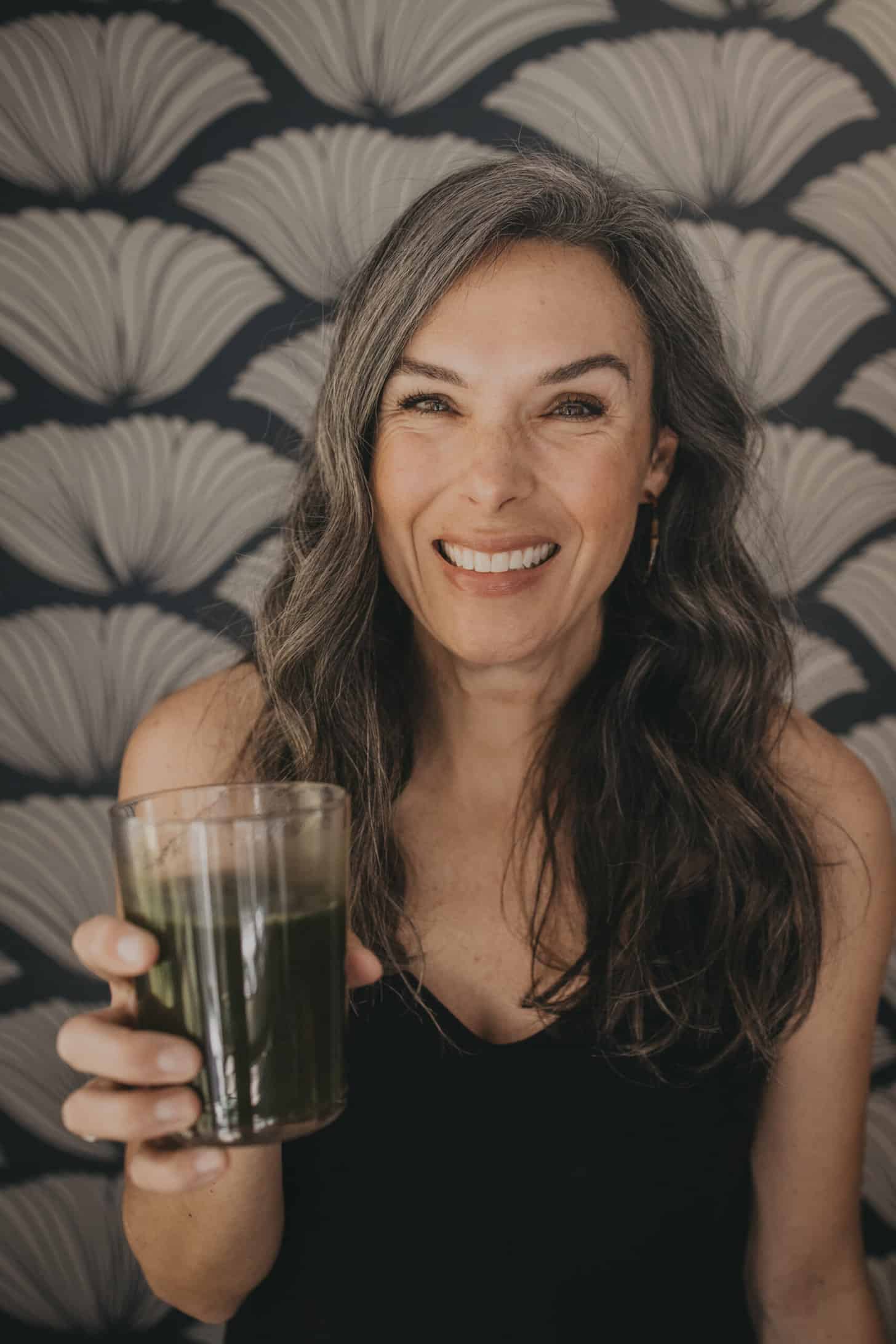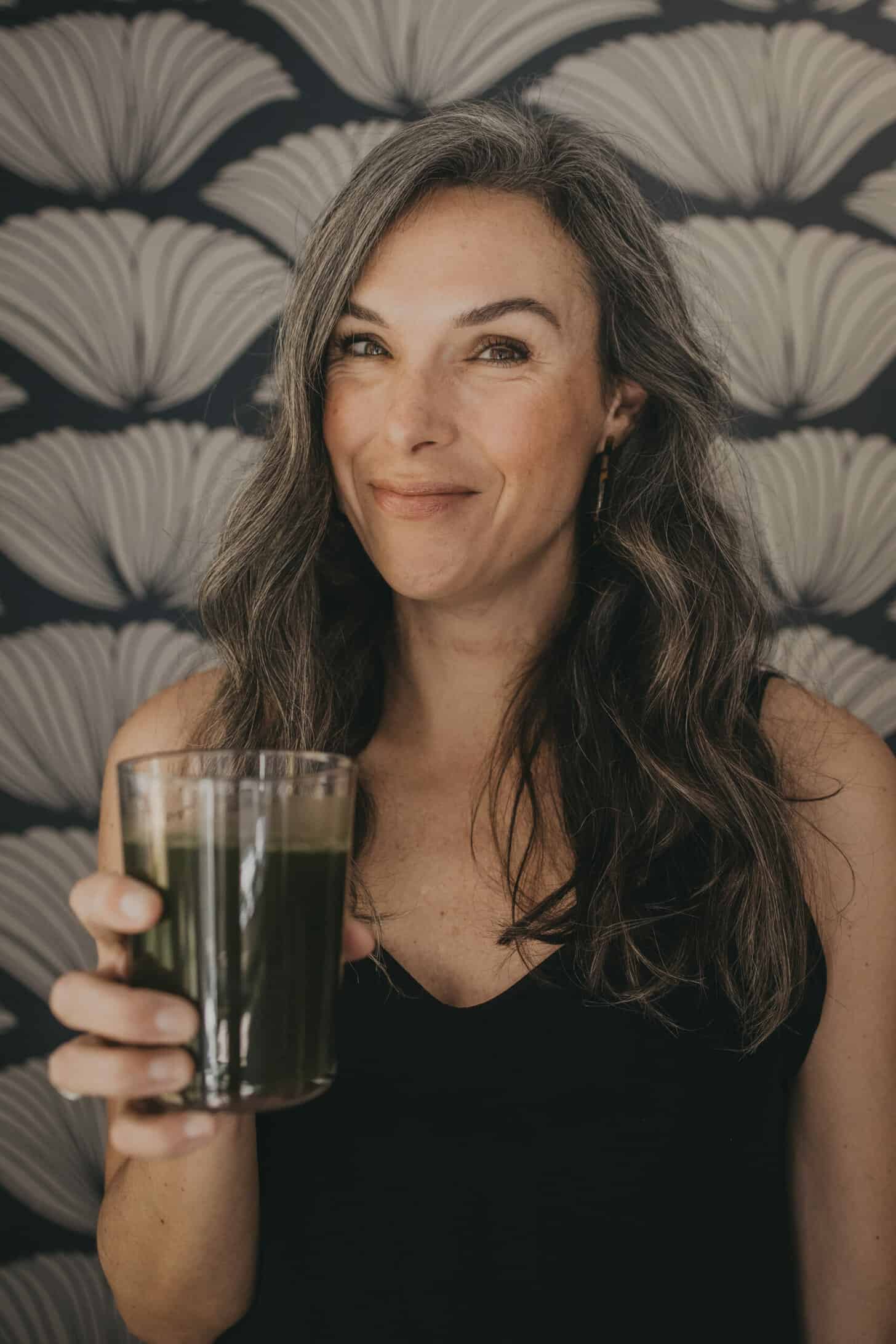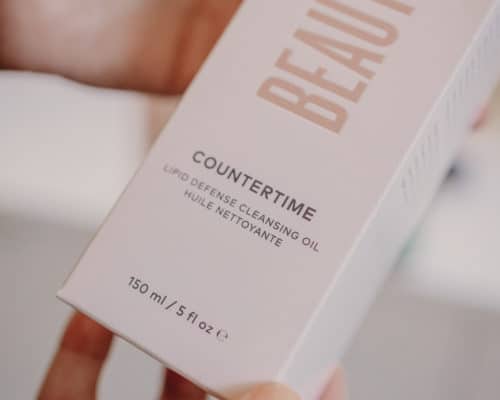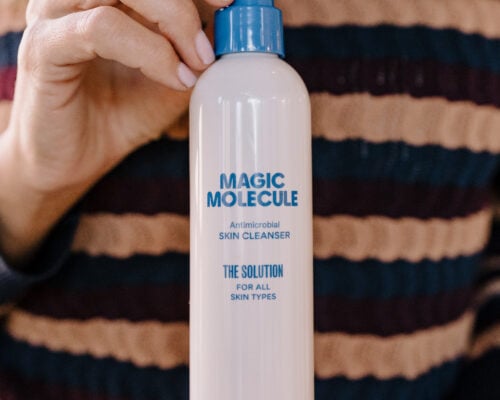When you experience skin inflammation (acne, redness, breakouts), it can feel like a helpless time. Often we look to skincare for help but did you know that there are ways for you to support your skin’s healing response through nutrition? Here are some foods to skip and what to indulge in when your skin flares up.

By: Hayley Wood L.E., N.T.P.
IN THIS POST:
- How skin inflammation reflects immunity
- How to reduce skin inflammation from the inside out
- Tried everything and still experiencing issues? Here are some last things to consider
- Final thoughts: you do you
Ever since Hippocrates stated “let food be thy medicine, and medicine be thy food,” humans have used food as a way to support their health. But things aren’t quite as simple as they were in 370 BC. Over the past century, our food has become more mass produced to accommodate larger populations. Fewer families are growing their own food, and the innate wisdom we’d garner about food has inevitably taken a backseat to our now super easy accessible take away options, digital delivery apps and prepackaged meals.
Ideas about skin health have changed too. How many times have you scoured the internet for a cream to “fix” your skin? I can’t scroll social media without being targeted by new skincare products with bold claims of quickly being able to help with stressed skin conditions. Sometimes those options feel like the only answer.
But instant gratification and a quick fixes aren’t actually the best way to support your skin when it’s in crisis.
What if you adjusted your nutrition to help support your skin—targeting the potential root of the problem rather than treating a symptom of it. Forgoing a quick fix with actionable steps in your nutrition can help prevent future skin crises. But first…
How skin inflammation reflects immunity
Before we dive into how food can help your skin, it’s important to remember that the skin is a vital organ in our immune system. It has many important roles to help protect our internal organs including working as an active barrier from the environment.
Because of this, your skin can reflect the state of your immune system. Whether it’s a rash from a brush with poison ivy; acne when our hormones start to quickly change in our teenage years; or even the dark circles under our eyes after not getting enough sleep, our skin does a great job of reflecting our immune health. These symptoms are red flags for something that needs to be address internally and they can range from minor to severe, from a small breakout to a chronic full body rash.
RELATED: The best skincare routine for teens.
How to reduce skin inflammation from the inside out
Now that we know our skin is constantly showing us our immune responses, we can look at the best tactic for skin support. The two most effective ways to help resolve a slew of skin issues is to:
- Address both internal and external inflammation.
- Maintain a healthy skin barrier.
Addressing our nutrition (along with calming ingredients in skincare) can help soothe the skin at the root of inflammation, while rebuilding nutrient loss to recover a damaged barrier.
Everyone’s diet and habits look different, but we share commonalities when it comes to overall inflammatory and anti-inflammatory foods. This list is a) not exhaustive, and b) not explicit medical guidance. These are just options to consider to help decrease skin inflammation during a flare up. And if you’re having chronic or long-term skin issues, please consult your doctor to get to the root cause.
Avoid: common food sensitivities
There are common food sensitivities that are the first thing to reduce right away when you’re in a skin crisis. These include:
- Gluten
- Sugar
- Dairy
These foods tend to require more work for our bodies to break down and they have potential side effects for those with inflammatory conditions, endocrine disorders and autoimmune diseases. They can be disruptive to our natural digestion process and even trick our brains into thinking we are craving these foods instead of key nutrients.
Because digestion begins in the brain, we know that breaking habits with these foods can feel impossible—but just remember, this change can be a temporary habit in order to give your skin a chance to calm.
These food categories are broad, so don’t be hard on yourself if you can only limit one or two at a time. This just allows you to lessen the likelihood of an inflammatory skin reaction. In fact, you may start to notice a little less congestion in the skin and a little more radiance by reducing these foods in your diet regularly.

Add: a handful of organic greens to each meal
Taking things out of your diet can start to feel depleting, so it’s important that instead of just eliminating, you add in other foods to take up the empty spaces on your plate.
A balanced plate usually combines the following macronutrients:
- Protein
- Complex carbohydrates
- Healthy fats
The best addition to this balanced plate is a heaping handful of greens. Try to add one to every meal as a sure-fire way to create biodiversity for healthy digestion. Often, we need leafy greens’ bitter and astringent flavors to help break out of certain food cravings such as sugars, processed carbs and dairy products. The brain starts to recognize the diversity of flavors and will start to crave more of these nutrients. This way you won’t miss the potential inflammatory foods that are keeping your skin in crisis mode after a while AND you’ll improve your digestion overall.
What this looks like:
We suggest incorporating greens like arugula and dandelion greens to start. You can:
- saute greens with garlic
- add a handful of greens to your smoothie
- make sauces or dressings, like pesto, for salads or to top noodles
- eat them fresh and raw
If that bitter taste is not your jam, try spinach instead since it blends nicely with just about any flavor you add to it.
Avoid: overly processed foods at each meal
Processed foods tend to have little to no nutritional content, but are such a staple in our diets. They fill the gaps between meals for a quick snack, they often seem less expensive than whole foods and have a longer shelf life than fresh foods. However, they are not serving your skin’s outbreak as there can be some skin irritating ingredients hidden in the ingredients list such as refined oils and sugars. Reducing your daily intake of overly processed foods can help your skin from hidden inflammatory ingredients that could be a culprit in its current crisis state.
Add: essential trace minerals
Processed foods tend to add little to zero essential minerals in our diets, which is why it’s important to introduce ESSENTIAL MINERALS into our diets when supporting a skin crisis. Trace minerals are essential to our health function, but are not naturally created in the body. This is why we need to eat mineral-rich foods in order to thrive.
Some functions of essential trace minerals include supporting nerve conduction, working as cofactors to different vitamins and helping our bodies absorb water. There are also common mineral depletions associated with certain skin reactions such as calcium deficiency for acne and zinc deficiency for slow-healing skin. Essential trace minerals work together with certain vitamins to help keep our cells happy and healthy.
What this looks like:
- Add a variety of colored foods to each meal. Food color variety means a diverse intake of vitamins that are ideal for optimal immune support.
- Add in Trace Minerals Concentrace to your water.
PRO TIP: Start by looking at local farmers markets to see what’s colorful, local, and in season—those will usually be the most nutrient dense foods full of trace minerals and vitamins.
Avoid: highly processed oils
Highly processed oils are high in inflammatory omegas that can impact our gut health and eventually our skin’s health. Canola oil, grapeseed oil, soybean oil, safflower oil and corn oil are examples of inflammatory oil that can be difficult to digest for many while irritating the intestinal lining of those with a sensitive digestive tract.
Oils that are processed in high heat may also contain omega 6, which can have an inflammatory effect if taken in excess. This can essentially eliminate the benefits of healthy fats in your diet such as omega 3. Limiting or fully eliminating processed oils will allow you to keep a balance of omega 3 to omega 6, which should be around 1:4, as omega 6 is naturally occurring in many whole foods.

Add: healthy fats
Instead of leaning on inflammatory oils for your fat intake, the simple shift to healthy fats can make a huge difference in your skin’s healing time. Healthy fats, otherwise known as essential fatty acids, are found in many foods you are probably already eating. These fats are known to help with absorption of vitamins and minerals, as well as work to help decrease inflammation in the body (including inflammatory skin conditions like acne and eczema).
Some examples of healthy fats include:
- organic extra virgin olive oil
- avocados
- fatty fish like wild caught salmon
- raw seeds/nuts
These fatty foods contain omega 3, which is an essential fatty acid to help reduce inflammation in the body and is great for cardiovascular health. Great blood flow means healthy glowing skin!
What this looks like:
- make a salad dressing with organic extra virgin olive oil
- add an avocado to your smoothie or as a side to your scrambled eggs
- snack on raw almonds during the day
Avoid: alcohol and caffeine
Alcohol and caffeine are not ideal beverage choices for when skin is in crisis mode. They can be quite dehydrating and also be disruptive to our overall immune system. If you can’t completely eliminate these, try to be mindful of the sugar content in them, which will also impact your blood sugar regulation, detoxification and digestion—all of which can create unnecessary stress to the body and reflect in a skin flare. Plus, dehydrated skin will showcase signs of premature aging like fine lines much more than if the skin was hydrated.
RELATED: How to reduce wrinkles naturally, according to an esthetician and How to treat rosacea, according to an esthetician.
Add: hydrating foods
Hydration can help the skin feel plump, useful and more even toned. This is why maintaining hydration levels is crucial during a skin flare. In addition to limiting dehydrating beverages, consider adding in hydrating foods such as:
- Watermelon (especially the white part of the rind)
- Celery
- Cucumber
- Watercress
Hydration is needed to help the structure of the skin retain plumpness and reduce inflammation. If you haven’t already added essential minerals to your diet, you can also add them to your water to help with proper hydration. The skin contains 64% water, which means the more we stay hydrated, the more the skin can function optimally.
What this looks like:
- chop up cucumbers as a snack
- add a pinch of sea salt and a squeeze of lemon to your water
- blend watermelon (white part of the rind included) into a refreshing midday drink
Tried everything and still experiencing issues? Here are some last things to consider
AVOID leftovers: The reason why you may want to avoid leftovers during a time inflammation is because you want to decrease your likelihood of getting exposed to bacteria overgrowth and food spoilage. Better to opt for fresh foods or foods that were frozen after being prepared.
REDUCE citrus: You might be thinking, isn’t citrus good for you? In most cases, absolutely. However, if you have tried everything to reduce your skin’s reactions and you haven’t had success yet, consider removing citrus because it can trigger a histamine receptor response.
ADD calming practices: Increase immune function by supporting natural detoxification, digestion and immune system with practices to help calm the nervous system. Here are few ways to do this during your meals:
- Remember to breathe deeply before and during your meals.
- Chew your food until it is liquified, making it easy to digest.
- Avoid lots of liquids during a meal, which can dilute your natural digestive enzymes.
- Introduce a post-meal walk to help with digestion.
Final thoughts: you do you
You have a lifetime of knowledge on how your skin responds to the world around you, whether that means you have a lot of resilience, you are very easily reactive or you just have a few things to avoid. No one knows your skin quite as well as you simply because of your knowledge from lived experience. Use that to help when you’re making daily lifestyle shifts to support your health overall.
It’s important to remember that prevention is always the best tactic to have long-term balance in your skin’s health. If you introduce nutrition as a form of daily skin support, you will likely see fewer skin crisis episodes in your future. If you have any questions in regards to nutritional support for a specific medical condition, we suggest that you get any diet changes approved by your primary care physician.
What do you do when your skin inflammation is just.too.much?

Medical Disclaimer: While the author is a Nutritional Therapy Practitioner, she is not a doctor, and these recommendations are only guidelines for reference, not medical advice. Please seek additional support or treatment from your doctor.



